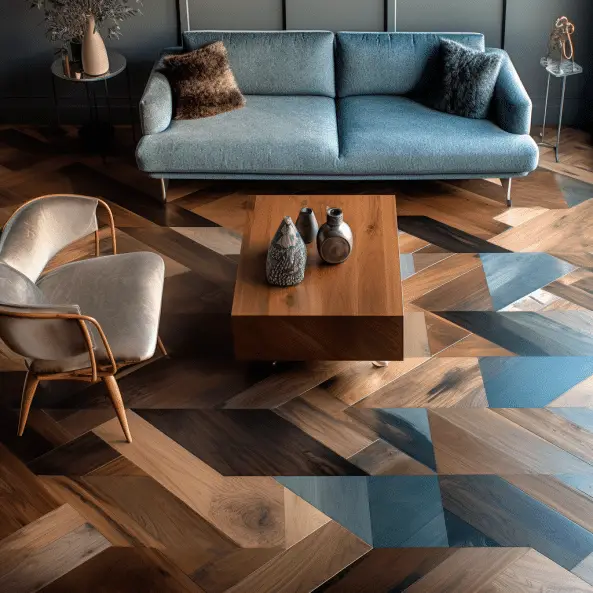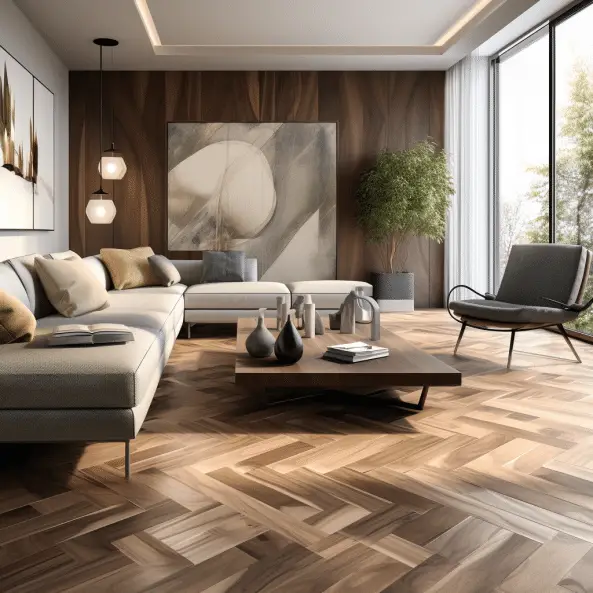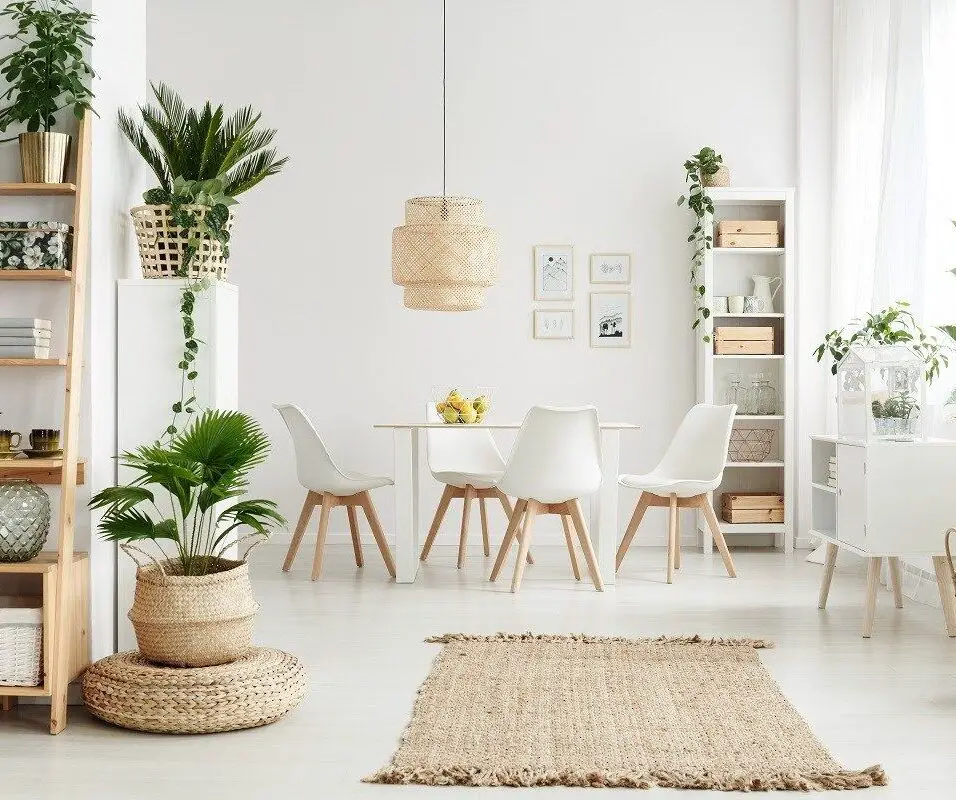Elevate Your Space: Mastering Tile and Wood Fusion
Introduction
How To Combine Tile And Wood Flooring: Combining tile and wood flooring has become a popular interior design trend, offering homeowners a creative and visually captivating way to elevate their living spaces. This innovative approach allows the seamless integration of two distinct materials, each with its unique characteristics and benefits. By strategically blending the durability and water-resistance of tiles with the warm, natural allure of wood, homeowners can achieve a harmonious and inviting atmosphere in any room. The combination of these two flooring types not only enhances the aesthetics but also provides practical advantages, catering to different functional requirements in specific areas of the house.
The artful amalgamation of tile and wood flooring enables homeowners to play with diverse design possibilities, transforming any room into a captivating and sophisticated space. The marriage of the sleek, modern appeal of tiles with the timeless charm of wood allows for a wide range of creative expressions, catering to various interior styles and personal preferences. Whether aiming for a contemporary, rustic, or eclectic look, the flexibility of this combination opens up an array of design options to suit diverse tastes.
Tile and wood flooring are both attractive and functional. Tiles solve daily problems in kitchens, bathrooms, and entryways due to their water- and stain-resistance. The warmth and comfort of wood flooring make bedrooms, living rooms, and dining rooms cozy. By carefully integrating the two materials, homeowners can define room zones and create a seamless transition that improves appearance and functionality.
How do you transition between tile and wood flooring?
Doors are typical transitions. The smoothest transitions include wood-to-tile strips, thin metal strips, or custom wood molding.
Tile and wood flooring should blend for a good look. It beautifies and provides a safe walkway when done well. Different design, layout, and height options exist for transitioning tile and wood floors.
T-moldings and transition strips are popular. Narrow strips of wood, metal, or other materials divide and smooth the tile-wood gap. T-moldings precisely combine two materials for shine.
Reducer strips work for tile and wood floors of different heights. Tile-to-wood slopes reduce trip hazards and provide natural flow.
Should I Grout Between Tile And Wood?
Natural small cracks are needed for a smooth hardwood-tile transition. Fill bathroom, kitchen, and fireplace grout lines where wood meets tile.
Humidity and temperature expand and shrink wood. Stiffer tiles are less mobile. Time can buckle, deform, and damage grout between materials.
Tile-wood grout joints collect dirt and moisture. Water in grout joints ruins wood floors. Cleaning grout lines is difficult, and debris damages transitions.
No grouting is needed when mixing wood and tile. Material separation, natural movement, and damage reduction make transition strips or T-moldings desirable. Strips of various materials and styles match homeowners’ designs.

How Do You Finish Between Tile And Wood Flooring?
The easiest and most subtle way to border two flooring types is with metal transition strips between kitchen tile and the adjacent room. Installation is possible with any finish of these strips.
Combining tile and wood flooring requires finishing to look professional. Finishing the transition makes it look good and ensures a smooth, durable transition between tile and wood. Depending on design and height difference, there are several ways to finish a tile-to-wood transition.
Common methods include transition strips or molding. These strips come in various materials, such as wood, metal, or plastic, and they are designed to bridge the gap between the tile and wood surfaces. Transition strips provide a clean and neat separation while allowing for a smooth and safe transition between the two materials. They come in different profiles, such as T-moldings, reducer strips, or end caps, catering to different height variations and design preferences.
Another method to achieve a clean finish is to create a custom threshold or transition piece. This involves crafting a transition element that seamlessly blends the tile and wood, ensuring a smooth and visually appealing connection. Custom thresholds can be made from wood that complements the flooring or incorporate both tile and wood elements for a distinctive look.
Which Is Cheaper Tile Or Wood Flooring?
Tile is cheaper than hardwood, which makes it a better option for those who are on a budget. However, being cheaper doesn’t mean that it isn’t a quality flooring material for your home. In fact, tile is considered to be more durable than solid wood and requires less maintenance, thus it can also cost less over time.
The cost comparison between tile and wood flooring depends on various factors, including the type of tile and wood chosen, the area to be covered, and installation expenses. Generally, tile flooring tends to be more budget-friendly than wood flooring.
Tile flooring comes in a wide range of options, from ceramic and porcelain to natural stone like travertine or slate. Ceramic tiles are often the most affordable, while porcelain and natural stone tiles can be moderately priced. The availability of budget-friendly tile options makes it easier to find cost-effective choices that suit different styles and preferences.
On the other hand, wood flooring can be more expensive due to the higher cost of materials and the complexity of installation. Solid hardwood flooring, made from genuine wood planks, is generally more costly than engineered wood or laminate, which use a combination of wood and other materials. Additionally, exotic or rare wood species can significantly drive up the price.
Installation costs can also differ between tile and wood flooring. Tile installation typically involves laying a mortar bed and setting each tile individually, which can be labor-intensive and may increase installation costs. In contrast, wood flooring installation can involve nailing or gluing the planks down, making it potentially less time-consuming and more affordable.
Are tile floors colder than wood floors?
The issue here is the speed at which the heat transfers – and that depends on the material the object is made of. Tile is a better conductor of heat, which means that it feels cooler than carpet or wood does.
Tile floors are generally colder than wood floors due to their different thermal properties. Tiles are excellent conductors of temperature, which means they can quickly absorb and release heat. As a result, tile floors can feel cold to the touch, especially during colder months or in regions with lower temperatures. The cold sensation is more noticeable when walking barefoot on tile floors.
In contrast, wood floors have lower thermal conductivity, which means they do not conduct heat as rapidly as tiles. Wood tends to feel warmer underfoot because it doesn’t draw heat away from the body as quickly as tiles do. Wood also has natural insulating properties, helping to retain some warmth in the floor.
Several factors contribute to the temperature difference between tile and wood floors. One factor is the installation method. Tiles are often installed directly on a concrete subfloor, which can be colder than the air temperature. This makes the tiles feel cooler than wood floors, which may have an insulating underlayment or gap that allows some air circulation.
What are the benefits of combining tile and wood flooring?
Thanks to its many benefits, tile and wood floors are popular with homeowners who desire a unique and versatile design for their living areas.
Aesthetics: The primary advantage of combining tile and wood flooring is the stunning visual appeal it creates. Any room’s aesthetics are enhanced by the contrast between tiles’ crisp, modern aspect and wood’s warm, natural charm.
Customization: The combination of tile and wood allows for endless customization possibilities.Tile patterns, colors, and wood species help homeowners match flooring to their likes and space theme.
Practicality: By integrating tile and wood strategically, homeowners can benefit from the practical advantages of both materials. Tiles are ideal for moisture-prone areas like kitchens and bathrooms due to their water-resistant properties, while wood flooring provides comfort and warmth in bedrooms and living rooms.
Durability: Tiles are known for their durability, scratch resistance, and low maintenance requirements, making them ideal for high-traffic areas. Combining them with the durability of wood flooring can result in a resilient and long-lasting flooring solution.
Seamless Transition: When done correctly, the combination of tile and wood flooring creates a seamless transition between different areas of a room or even between rooms. This visual continuity contributes to a cohesive and well-designed living space.
Flexibility in Design: Tile and wood floors can suit modern, rustic, and eclectic styles.It allows for creative expressions, enabling homeowners to define distinct zones or incorporate unique patterns and borders.
Increased Property ValueA property with tile and wood floors looks classy and is worth more. This feature may draw buyers and distinguish the home in the real estate market.
Energy Efficiency: Wood flooring’s natural insulation can lower heating and cooling costs.
Are there any maintenance considerations for combining tile and wood flooring?
Since these two materials have different care requirements, homeowners must take a proactive approach to ensure the longevity and beauty of their combined flooring.
Cleaning
Regular cleaning is essential for both tile and wood flooring. For tile, use a mild detergent and warm water to remove dirt and grime. Avoid using harsh chemicals or abrasive scrubbers that could damage the tile surface. Every so often, sweep or vacuum wood floors to get rid of dust and dirt, and then mop them with a wood floor cleaner to keep the shine.
Sealants
If using natural stone tiles, it’s crucial to apply a quality sealant to protect them from stains and water damage. The frequency of resealing will depend on the type of stone and the level of foot traffic. Wood flooring can also benefit from a protective finish like polyurethane or wax, which enhances its resistance to scratches and spills.
Spills and Moisture
Both tile and wood floors can be vulnerable to moisture damage, though to varying degrees. Wipe up spills promptly to prevent water from seeping into the grout joints or wood seams. In areas where moisture is more likely, such as kitchens or bathrooms, consider using rugs or mats to protect the floors.
Maintenance for Grout
If you have tile flooring with grout lines, inspect the grout periodically for signs of wear or cracks. Damaged grout should be repaired promptly to prevent water penetration, which can lead to more severe issues over time.
Protection
In high-traffic areas or where furniture may scratch the floor, consider using protective pads under furniture legs to prevent damage. For wood flooring, avoid walking on it with high-heeled shoes or sports cleats, as these can cause scratches and dents.
Regular Inspections
Regularly inspect both tile and wood flooring for any signs of damage or wear. Addressing issues promptly can help prevent small problems from escalating into more extensive and costly repairs.
By following these maintenance considerations, homeowners can enjoy the beauty and functionality of their combined tile and wood flooring for many years to come. It is essential to treat each material with the care it deserves to preserve its integrity and ensure a cohesive and appealing flooring solution.
What are the cost implications of combining these two flooring types?
Combining tile and wood flooring can have cost implications that homeowners should consider before embarking on this design endeavor.
Material Costs
Tiles vary widely in price depending on the type and quality. Ceramic tiles are generally more affordable, while porcelain and natural stone tiles can be more expensive. Similarly, wood flooring costs can range from budget-friendly options like engineered wood or laminate to more costly solid hardwood or exotic wood species.
Installation Costs
The installation process for combining tile and wood flooring can be more labor-intensive and time-consuming than installing a single type of flooring. Professional installers may charge more for the complexity involved in ensuring a smooth and seamless transition between the two materials.
Transition Materials
To achieve a cohesive and visually appealing transition, homeowners may need to invest in transition strips, custom thresholds, or other materials that bridge the gap between tile and wood. These additional materials can add to the overall cost of the project.
Subfloor Preparation
In some cases, the subfloor may require preparation or leveling to ensure a proper foundation for both tile and wood flooring. This additional step can add to the project’s expenses.
Maintenance and Longevity
Wood floors may need to be refinished every so often to keep their beauty and durability. Tile floors, on the other hand, need less upkeep and last longer.Think about the cost of upkeep before you decide.
Property Value
Combining tile and wood flooring can enhance the aesthetic appeal and overall value of a property. While this may not have an immediate monetary cost, it can have significant implications for homeowners who plan to sell their home in the future.

Conclusion
Beautiful, balanced designs from these two materials meet homeowners’ tastes and interior trends. The warmth and beauty of wood and tiles’ water-resistance aid homeowners.
Design, transition, upkeep, and tile-wood floors are included. Design-installation pairings are great. Tile-wood flooring can be harmonic and lasting depending on homeowners’ needs, tastes, and budgets.
Wood tile seamless transitions can emphasize, isolate, or merge any material. Homeowners appreciate tile and wood floors because they provide value, beauty, and functionality.
Professional direction, costs from trustworthy suppliers and installers, and maintenance can combine tile and wood flooring. Smart tile and wood floors can make any area functional and lovely.








